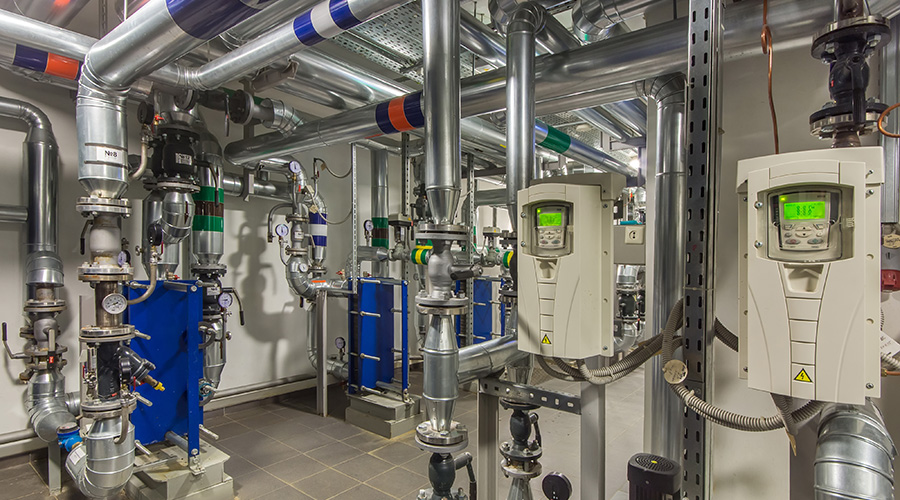 No standards exist to determine the length of time a manager should expect a chiller to operate, but workload over the years plays a major role in the decision.Photo: Daikin Applied
No standards exist to determine the length of time a manager should expect a chiller to operate, but workload over the years plays a major role in the decision.Photo: Daikin AppliedTechnology Advances Improve Chiller Performance
Part two of a four-part article on chiller repair or replacement issues
Chillers are not only becoming more energy efficient, but their impact on the environment is lessening.
“There have been huge advancements in chiller technology,” says Pagliaro Herman. “We’ve got magnetic drive bearings, and we’ve been really nearing the edge of mechanical efficiency on these machines. So even if you bought a machine 10-15 years ago and with variable-speed technology, you’re likely able to get a significant energy improvement out of a new chiller. Now the question is, is that improvement enough to justify replacing the machine?”
Another technological development in chillers is the evolution of the magnetic bearing chillers, which do not require oil to operate.
“It’s not unusual to have a $35,000 expense to replace bearings, seals and gaskets in machines when you open them,” Leichner says. “With the newer technology machines, they have magnetic bearings and it’s levitated, so you don’t have friction like in the older, oiled systems, so as a result, the machines can live longer.”
With no oil needed, another maintenance task is no longer necessary.
“With new chiller technologies that are oil-free, that eliminates the cost of oil changes, oil analysis, all of that additional maintenance spending,” Pagliaro Herman says.
With these expanding chiller options, managers can tailor equipment specification to match their specific applications.
“For the different vertical markets, the tipping points vary,” Leichner says. “Comfort is very important to most customers. How is comfort important to test scores, or teacher retention or maintaining as much attendance as you can in a school district? A comfortable, consistent environment with good air quality and good facility design and care actually has a big impact on financial performance.”
While air comfort remains a high priority in health care settings as well, they require additional priorities than educational facilities.
“If you don’t have redundancy in a nursing care center that’s mandated to be cooled, if they lose cooling, that reliability becomes potentially life-threatening,” Leichner says. “People can pass out or pass away from overheating and exhaustion.”
Related Topics:















